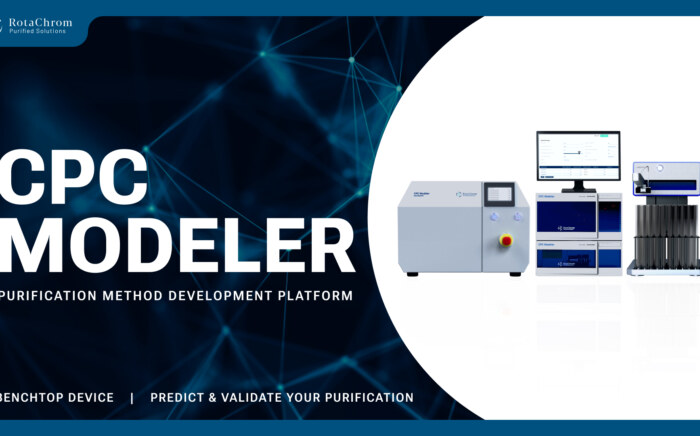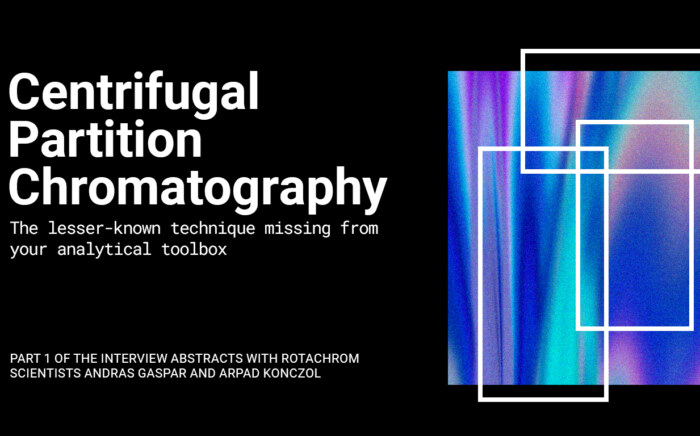Increasing separation efficiency by pH adjustment in Centrifugal Partition Chromatography
NewsIn the realm of isolating natural products, counter-current chromatography, with a special emphasis on centrifugal partition chromatography (CPC), assumes a pivotal role. The intricate task of chromatographic separation of diverse chemical constituents within complex extracts stands as a significant challenge for researchers in the natural product field. In this blog series, you’ll learn all natural extracts CPC purification secrets and tips.
Natural Extracts CPC Purification
Throughout history, medicinal plants and crops have held a special place in human focus. Their positive effects on health have been meticulously studied and documented long before the advent of modern medicine. Even in the contemporary era, these botanical wonders continue to hold their ground, often serving as preferred modes of treatment.
In the landscape of companies engaged with plant-based products, a trend emerges. They derive their offerings through generic mass volume procedures, such as ethanolic or supercritical extraction. This approach commonly results in the acquisition of products possessing a relatively broad spectrum. Such products have faithfully fulfilled their roles over centuries, serving as medicines or indispensable dietary supplements.
However, when it comes to the application of natural products as therapeutic molecules, a complexity arises. The traditional extraction methods in play often fall short in terms of selectivity. Consequently, the end-user is often confronted with standardized therapeutic extracts that contain an array of active ingredients spanning a wide spectrum.
Centrifugal Partition Chromatography Basics
Centrifugal partition chromatography (CPC) stands out as a liquid-liquid chromatographic technique where both the mobile and stationary phases take the form of liquids. This method, characterized by its scalability and adaptability, finds application in isolating compounds, as well as remediating or eliminating contaminations.
In the realm of traditional liquid-liquid chromatography, the separation transpires between two immiscible liquids: the mobile and stationary phases. The separation’s efficacy hinges on the sample components’ partition coefficients, which dictate the pace at which molecules traverse the system.
In the CPC process, interconnected cells affix to a sizeable rotor, within which the liquid stationary phase resides and becomes anchored by a formidable centrifugal force. The mobile phase traverses the stationary counterpart in minute droplets, capitalizing on an expansive surface area that optimizes mass transfer between the phases.
CPC rotors are operative in two distinctive modes: ascending and descending. The former employs the mobile phase as the less dense component, counter to the direction of the centrifugal force, while in the latter, the denser mobile phase prevails. Typically, descending mode yields superior separation outcomes.
Upon the culmination of the purification process, automated fraction collectors meticulously preserve chosen fractions based on pre-set program parameters. The chromatographic process’s visual output is encapsulated in a chromatogram, unveiling the narrative of the separation journey.
CPC technology unveils its potential across a spectrum of chemical production scenarios, as most processes encompass some form of purification or separation. While it may entail a more intricate method development than alternative techniques, the advantages are well-founded. CPC takes the lead over competing methods, showcasing superior efficiency and flexibility. This level of control empowers precise solvent adjustment, culminating in remarkably efficient and selective results.
A distinctive facet of CPC is its independence from silica gel. In the CPC and particularly RotaChrom devices, the solvent system eliminates the necessity for consumables like silica gel. The inherent liquid-liquid nature of the method liberates instrument operation from its use. This not only endows it with adaptable purification prowess but also asserts its position as an unequivocally cost-effective chromatographic technique.
Advantages of Natural Extract CPC Purification
The prowess of centrifugal partition chromatography encompasses a host of advantages that hold particular allure for the natural product industry, including its ability to:
- Seamlessly scale up to accommodate larger quantities at the preparative level.
- Offer an array of solvent options, thereby affording researchers an impressive degree of flexibility.
- Facilitate the segregation of common matrix materials from the specific target analytes.
- Often yield a high sample recovery rate, ensuring a substantial portion of the sample is successfully retrieved.
Moreover, the widespread adoption of CPC within the industry is a testament to its suitability, driven by factors such as:
- The necessity for academic laboratories to maintain cost-efficiency.
- The notable overlap in physical-chemical properties between the solvents utilized for natural product extraction and those typically employed in CPC.
- The robust nature of CPC, allowing it to effectively handle challenging crude extracts.
In summation, the verdict is clear: centrifugal partition chromatography unequivocally stands as the optimal choice for the natural extract industry.
Further Resources
To learn more about natural extracts, CPC and chromatography in general, click any of the links below.



